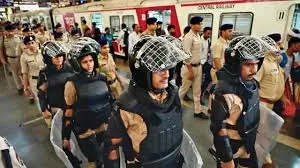India to conduct nationwide civil defence mock drill on May 7: Full list of 244 locations

New Delhi, May 7, 2025 — India launched a nationwide civil defence mock drill today across 244 districts, reinforcing its commitment to emergency readiness. Named Operation Abhyaas, this drill is one of the largest preparedness exercises since the 1971 war. It aims to boost coordination, raise public awareness, and improve rapid-response systems.
Why This Drill Matters
The government initiated the drill in response to growing national security concerns. Two weeks ago, a terrorist attack in Pahalgam killed 26 civilians. Since then, the focus on civil defence and disaster response has intensified.
Officials want to equip citizens with essential survival knowledge. “Preparedness must begin at the community level,” said a Home Ministry spokesperson. “Operation Abhyaas empowers citizens to respond quickly and confidently.”
What the Drill Includes
Authorities designed the drill to simulate real emergency conditions. It includes:
- Air Raid Sirens: Sirens rang at 4:00 PM in key areas to simulate aerial threats.
- Evacuation Exercises: Schools, offices, and markets practiced orderly evacuation procedures.
- First Aid Demonstrations: Medical teams trained residents in life-saving techniques.
- Blackout Scenarios: Controlled power outages tested emergency power systems.
- Awareness Campaigns: Civil defence officers educated people on response steps and safety kits.
These drills ensure that both officials and residents stay alert and ready for any emergency.
Regions That Participated
Many states actively took part in today’s drill. From metro cities to rural towns, civil defence units coordinated detailed simulations.
Highlights by State:
- Delhi: All 11 districts carried out siren drills at 55 key locations.
- Maharashtra: Mumbai, Pune, and Nagpur ran evacuations in schools and commercial areas.
- Punjab: Amritsar, Ludhiana, and Bathinda saw strong community engagement.
- Kerala: All 14 districts participated, with drills focused on flood and coastal emergencies.
- Telangana: Hyderabad hosted exercises in areas like Secunderabad and Charminar.
- Uttar Pradesh: Lucknow and Varanasi focused on building evacuations and fire safety.
Public Participation and Guidelines
Before the drill, the government issued clear guidelines to avoid panic. It reminded people that the simulation posed no real threat. Authorities encouraged everyone to cooperate and treat the event as a learning opportunity.
“Safety starts with awareness,” said Dr. Manish Sharma from the National Institute of Disaster Management. “These drills train people to act quickly and safely.”
Civil Defence in Focus
In recent years, India has faced growing internal and external security threats. This reality has revived the importance of civil defence training. While military preparedness remains strong, civic readiness often lags. Operation Abhyaas seeks to close that gap.
The Pahalgam attack served as a painful reminder. As a result, the government accelerated efforts to boost community-based security and awareness.
Use of Technology and Media
To keep people informed, state governments used technology effectively. They sent out alerts via mobile apps, local news channels, and automated phone messages. In Delhi, the police live-streamed parts of the drill and shared safety tips on social media.
This approach ensured transparency while increasing public engagement.
Volunteer Training and Coordination
Ahead of the drill, more than 12,000 volunteers trained in evacuation, first aid, and emergency communication. The operation also tested key infrastructure, including:
- Emergency sirens
- Ambulance and fire response units
- Two-way radios and satellite phones
This level of planning highlighted the government’s serious commitment to preparedness.






